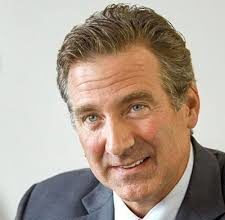Over the past year, all too many employees have felt like Sisyphus from Greek mythology—fated to repeatedly push a boulder up a hill, only to see that boulder roll back down just as it nears the top. Boundaries between employees’ work and personal lives have largely evaporated as they jump from one Zoom call to another, and as the days and even weeks blur together. Ground down by these pressures, many people have struggled to articulate what their work—and life in general—means.
While Covid-19 amplified these feelings, finding meaning at work will remain vital for finding meaning in life, long after the worst disruptions of the pandemic have eased. Companies that implement successful environmental, social and governance (ESG) programs can help their employees in this quest.
Yet for leaders in all types of organizations, it has sometimes seemed as if no good deed (or at least no good intention) goes unpunished. For example, in the United States, if a CEO says publicly that wearing a mask when around other people can help tame the virus (a seemingly straightforward statement), he or she risks alienating current or potential customers who believe otherwise. Consider Nike’s 2018 ad campaign featuring then San Francisco 49ers quarterback Colin Kaepernick taking a knee to protest racial injustice. The company’s stock price fell as social media users who disagreed with the ad’s position attacked Nike, though it ultimately recovered. And what about former New York mayor Mike Bloomberg? When he tried to limit the size of sugary drinks sold in the city, citing concerns about obesity and diabetes, he was criticized from all sides.
The lesson is clear: When demonstrating commitment to ESG, leaders must balance their instinctive desire to do what they feel is right with their responsibility to deliver results for not just their shareholders but also their key stakeholders, including employees.
Activating Virtuous Cycles
Leaders who know how to strike this balance lend credence to the claim that businesses can do well by doing good. For instance, it’s obvious that protecting the Earth’s natural resources and making the world a better place for everyone by supporting the well-being of marginalized populations is the right thing to do from a moral standpoint. It’s also the right thing to do from a business perspective, because it activates a virtuous cycle for elevating workforce performance.
A company that excels at ESG initiatives builds a proud, engaged workforce. People appreciate working for an organization where they can make a positive difference in the world. They want to feel that the work they do every day has meaning beyond merely generating profits for their employer or a good paycheck for themselves. That sense of meaning, in turn, generates a sense of belonging to something larger than oneself, and deep pride in one’s contribution. Moreover, employees who feel a sense of belonging and pride are more likely to commit to the organization and work even harder to ensure its success.
A recent study by Marsh McLennan found that top employers, as measured by employee satisfaction and ability to attract talent, have significantly higher ESG scores than their peers.[1] This same study shows that commitment to ESG is particularly important to Millennials and members of Gen Z, who are making up an increasingly large portion of the total talent pool (an anticipated 72 percent by 2029).
Of course, this impact on workforce performance and talent retention is one important illustration of what doing well by doing good can look like. ESG excellence can also strengthen loyalty among customers who want to buy from companies embodying their core values. And more loyal customers are more profitable ones.
Picking Your Battles
Reaping the business benefits of doing good doesn’t just happen. As noted earlier, leaders have to pick their battles. That’s because the business world is struggling with scarce resources and is awash in competing and often conflicting ideas about what constitutes the right way to behave.
How can leaders enhance the odds of activating the workforce-performance cycle through ESG? The list of options is larger than a New Jersey diner menu, so leaders must focus their efforts. Here are some ideas for narrowing the choices, selected because they most directly drive engagement, job satisfaction, pride, and loyalty among employees:
• Make it hands-on. Design ESG programs that enable employees to help feed people who are hungry, build houses for people who need roofs over their heads, tutor students or coach youngsters. Activities where employees can actively participate and generate tangible results engender the highest psychological benefit, and thereby create the strongest loyalty to the organization.
• Tap into teamwork. Support group activities that call for teamwork, such as fun runs, walk-a-thons and fundraising competitions. These enable people to mix business with pleasure and build social networks and friendships–additional potent mechanisms for building motivation and engagement.
• Look outside. Activities that involve suppliers or customers provide additional opportunities for employees to establish and strengthen bonds and to take part in something bigger than themselves and their own organization. Such programs also enable people from each organization to get to know each other as human beings, not just as business associates. One company, for example, hosts an annual 24-hour run for charity, organizing teams comprising its employees, suppliers and customers. Teams that raise the most money for beneficiaries win awards, and the event is attended by sponsors donating their products, as well as musicians and food purveyors.
• Support employee resource groups. Sponsor and fund employee resource groups (ERGs) for women, members of the LGBTQ community and other minority groups, if your organization doesn’t already have ERGs. Providing financial support for outside organizations that similarly focus on development opportunities for marginalized groups can make employees feel even prouder about where they work.
• Craft compelling communications. Establish a communication program that highlights your organization’s ESG activities. Use social media as well as internal channels to boost awareness among employees as well as external stakeholders of the contributions your organization is making to ESG, and to enable everyone to celebrate those successes.
ESG excellence can create hard-to-quantify but undeniably positive impacts on workforce performance–by enhancing employees’ job satisfaction, pride, commitment to the organization and mental health. But to achieve those impacts, leaders must look beyond any false starts and stumbles they may have experienced and take focused action now.
[1] https://www.mmc.com/insights/publications/2020/may/esg-as-a-workforce-strategy.html








